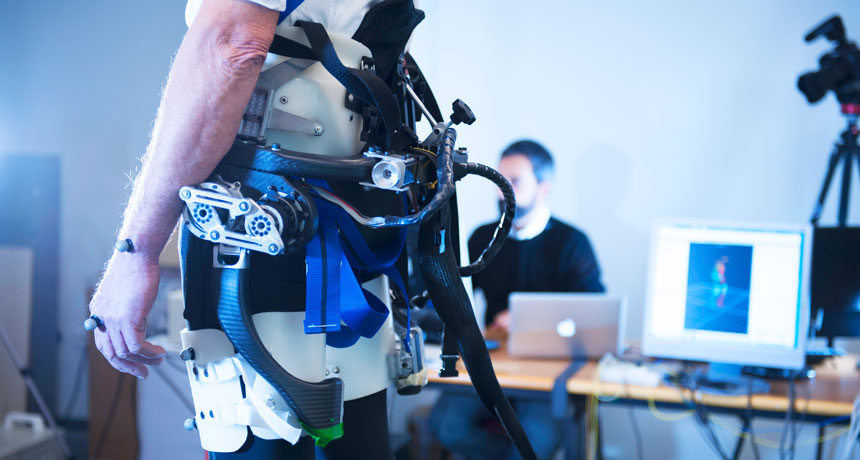New pelvic exoskeleton stops people from taking tumbles

A wearable robot could prevent future falls among those prone to stumbles.
The new exoskeleton packs motors on a user’s hips and can sense blips in balance. In a small trial, the pelvic robot performed well in sensing and averting wearers’ slips, researchers report May 11 in Scientific Reports.
Exoskeletons have the potential to help stroke victims and people with spinal cord injuries walk again (SN: 11/16/13, p. 22) — and even kick soccer goals (SN Online: 6/12/14). But this new model focuses on a more ordinary aspect of the human condition: falling on your face or your rear. “Exoskeletons could really help in this case,” says study coauthor Silvestro Micera, an engineer at École Polytechnique Fédérale de Lausanne in Switzerland.
Most exoskeletons guide the movement of the wearer, forcing the person to walk in a particular way. But the new pelvic device allows the user to walk normally and reacts only when it needs to. A computer algorithm measures changes in a wearer’s hip joint angles to detect the altered posture that goes along with slipping. The robot then uses its motors to push the hips back into their natural position to, hopefully, prevent a fall.
At a rehab facility in Florence, eight elderly people and two amputees — two groups at risk for balance issues — tried out the device while walking on a treadmill. The robot picked up on slips within 0.35 seconds of a change of gait.
Still, the device has some hurdles ahead. The exoskeleton is bulky, so Micera and his team are working on a sleeker model that would be less imposing for elderly users. The team is also testing the robot’s skills in other types of balance loss like tripping.